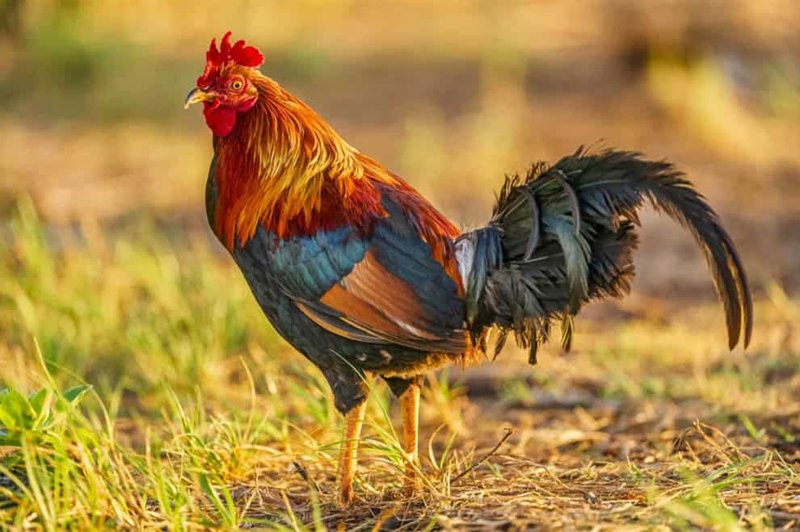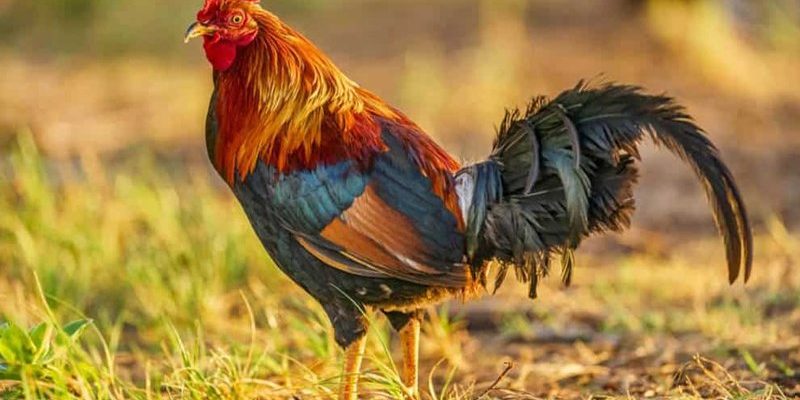
Let’s think of chickens as global travelers. Originally from Southeast Asia, they’ve spread to every corner of the Earth. You could say they’ve taken the concept of “going global” to a whole new level, adapting to different environments and cultures along the way. So, whether you’re curious about their wild relatives or the various breeds that populate farms worldwide, I’m here to fill you in on where to spot the chicken in its many forms.
Origins: The Wild Ancestors of Chickens
To understand where to spot chickens today, we first need to take a step back in time. Chickens trace their roots back to the *Gallus gallus*, or the red junglefowl, native to Southeast Asia. These wild birds thrive in forests and jungles, often seen fluttering among the foliage or foraging for seeds and insects.
Over time, as humans began to domesticate these birds, they adapted to different environments. Domestic chickens can now thrive in a range of habitats, from backyards to sprawling farms. It’s amazing to think that the chickens pecking at the ground in your neighbor’s yard share a lineage with wild fowl that once roamed dense jungles!
This domestication process allowed chickens to flourish in various climates. Today, they’re found in places as diverse as the chilly farmlands of Canada to the warm, sunny fields of Australia. The adaptability of chickens is truly remarkable and is one reason they’re so prevalent worldwide.
Global Habitats: From Farms to Backyards
Chickens can be spotted in diverse habitats around the globe, but they thrive best in areas that offer a mix of sun, shelter, and a bit of space to roam. Farms are the obvious choice, where you’ll find large flocks clucking away in pastures, often free-ranging or living in coops.
In addition to farms, chickens are popular in urban and suburban backyards. Increasingly, city dwellers find joy in keeping a small flock. This trend has grown, allowing residents to enjoy fresh eggs and a bit of nature in their lives. Imagine walking into your backyard, and there they are — a group of chickens scratching at the ground, providing you with a slice of rural life right in the city.
Interestingly, chickens are also spotted in some unexpected places. For example, in parts of Hawaii, feral chickens roam freely. They’ve adapted to life in the wild, often seen scurrying across roads or foraging in gardens. This sight is a reminder of their wild ancestors and how far they’ve come.
Chickens Across Continents
Let’s take a little world tour to see how chickens inhabit different continents.
– North America: Chickens are a common sight here, especially on farms in states like Iowa and Arkansas. You’ll find a variety of breeds, from the classic Rhode Island Reds to lively Leghorns. Many urban areas also embrace backyard raising.
– Europe: In Europe, chickens are celebrated not just for their eggs but also as pets. The British love their bantams, tiny chickens that come in a range of colors. Meanwhile, in France, the *Bresse* chicken is considered a culinary treasure.
– Asia: The heart of chicken domestication, Asia holds a special place in chicken history. Countries like China and India have a rich assortment of local breeds, each adapted to their specific environments. You might find the *Indigenous Black* chicken in India, known for its unique color and health benefits.
– Africa: In many African nations, chickens are vital for sustenance. They thrive in both rural and semi-urban areas, often kept for eggs and meat. Their adaptability to different climates has made them an essential resource for families.
– Australia: Chickens have become a staple in Australian backyards. You’ll see a mix of local breeds and exotic varieties, with a growing interest in sustainable farming and free-range practices.
How Chickens Adapt to Their Environments
What makes chickens so versatile? Their ability to adapt plays a huge role. Chickens are hardy birds, able to handle various climates. For example, in colder regions, they develop thicker feathers and find ways to keep warm in coop environments.
Their diets also change based on their surroundings. In rural areas, chickens often enjoy a mix of grains, seeds, and insects. In urban settings, they might dine on kitchen scraps and commercial feeds. This flexibility not only helps them thrive but also connects them to their human caretakers in meaningful ways.
You might be wondering how their social behavior factors into this adaptability. Chickens are social animals, often living in flocks. This social structure helps them communicate, find food, and protect themselves from predators. So, whether they’re clucking in a barn or scratching around a suburban yard, their social instincts guide them in making the most of their environment.
Conservation and Breeds: Preserving Diversity
With so many chickens around, it’s essential to remember the importance of conservation. While many breeds are thriving, others face risks due to industrial farming practices. Some local breeds, adapted to specific environments, are at risk of extinction.
Organizations worldwide work to preserve these unique breeds. For example, the *Aseel* from India and the *Campine* from Belgium are just a couple of breeds that need attention. By promoting breeding programs and educating farmers, these organizations help maintain genetic diversity.
You might also be curious about the difference between commercial and heritage breeds. Commercial chickens, bred primarily for meat and eggs, often lack the diversity seen in heritage varieties. These heritage breeds offer distinct flavors and are better suited to sustainable farming practices. Knowing about these differences can inspire choices that contribute to conservation efforts.
Chickens in Culture: More Than Just Food
Chickens hold a special place in cultures around the world. They appear in folklore, art, and even festivals. In many cultures, chickens symbolize fertility, prosperity, and care.
For instance, in some African cultures, people keep chickens for ceremonial purposes, believing they bring blessings to the family. In Asia, the Lunar New Year celebrations often feature chickens as symbols of good luck in the coming year.
Chickens also inspire numerous dishes around the globe. From the spicy *chicken tikka masala* in India to the comforting *coq au vin* in France, they have secured their spot on dining tables everywhere. Each dish tells a story, showcasing regional flavors and culinary traditions.
Why Knowing Where to Spot Chickens Matters
Understanding where to spot chicken habitats can help you appreciate their role in our world. Whether you’re a farmer, a backyard enthusiast, or just a curious observer, knowing about these birds enriches your experience.
Chickens are not just livestock; they are part of many ecosystems and cultures. By observing them, you can learn about agriculture, sustainability, and even human relationships with animals. Plus, engaging with local chicken populations can inspire practices that support biodiversity and conservation.
In a way, spotting chickens is like uncovering little pieces of history and culture. Each flock tells a story of adaptation, survival, and the bond between humans and animals.
As you venture into the world of poultry, remember the fascinating journey of chickens from forests to farms and back. They are more than just a source of food; they are a testament to resilience and a bridge between cultures. So next time you see a chicken, take a moment to appreciate where it’s come from and the role it plays in our lives.

